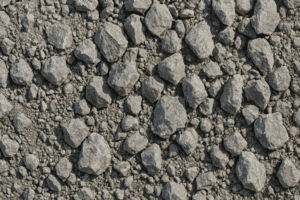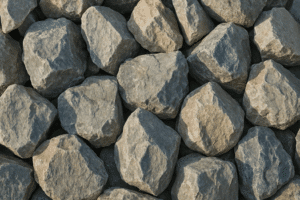Gravel Size Chart with Pictures: A Comprehensive Guide
Published on: May 30, 2025
Get an estimate for your project in 60 seconds

The size of gravel used in construction, landscaping, and driveway projects is essential. Gravel can impact more than just the look and feel of your project; having the right size (and type) of gravel can prioritize drainage, compaction, support, or a combination of these features. Whether you’re building a driveway, designing a garden path, or creating a foundation, choosing the right gravel size is crucial for the success of your project. In this comprehensive guide, we will walk you through everything you need to know about gravel sizes, their uses, and how they can impact your construction efforts.
The Gravel Size Chart
|
Gravel Type |
Size Range (mm) |
Size Range (inches) |
Typical Use |
|
Fine Gravel |
2.0 – 6.3 |
0.08 – 0.25 |
Walkways, patios |
|
Medium Gravel |
6.3 – 20 |
0.25 – 0.80 |
Driveways, drainage |
|
Coarse Gravel |
20 – 63 |
0.80 – 2.50 |
Base layers, erosion control |
|
Larger Stones |
63+ |
2.5+ |
Decorative landscaping, riprap |
This is a simple gravel size chart. It is worth noting that several types of stones fall into each of these size categories.
Common Gravel Sizes with Pictures and Uses
Pea Gravel (2-8 mm)

Pea gravel is small, rounded stones about the size of peas. Its smooth texture and eye-catching appearance make it an ideal material for decorative landscaping, garden paths, and driveways. The compact size provides a secure stepping area and a sleek appearance.
3/4-Inch Gravel (19 mm)

This medium-sized gravel is used for driveways and drainage projects. It compacts well and offers a great base. A common type of 3/4 inch gravel is one of the most popular aggregates, #57 crushed stone, which balances drainage with load-bearing ability.
Crusher Run (0-40 mm)

Crusher run is a mixture of stone dust and various sizes of crushed stone. The different sizes mesh tightly together for a solid base, perfect for home/road construction projects such as driveways, roads, and patios. It is preferred where a solid, stable base is critical.
Riprap (63+ mm)

Boulders used as ripraps to protect banks and shorelines and prevent erosion of soils are another product our large stones are utilized for. Rugged stones grant a lasting, walkable path while still being gentle on the earth or garden soil.
How to Choose the Right Gravel Size
Use our free aggregate quiz to get a better idea of which material you want for your project, and our aggregate calculator to help estimate how much you need. You can also order from our website and have your materials delivered nationwide. Any questions or concerns? Get in touch with a member of the Hello Gravel team today.
Author: Chance Kittrell